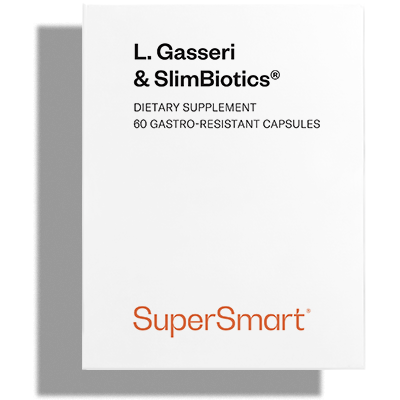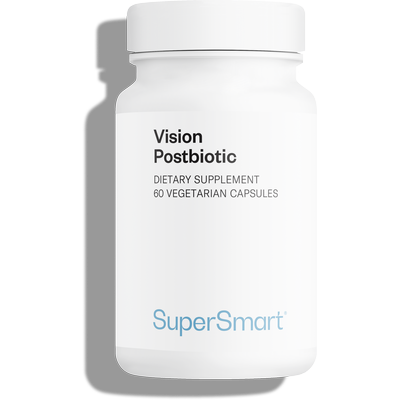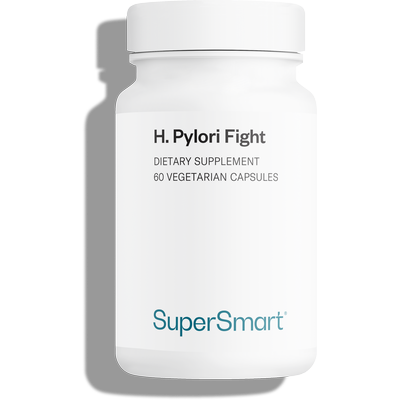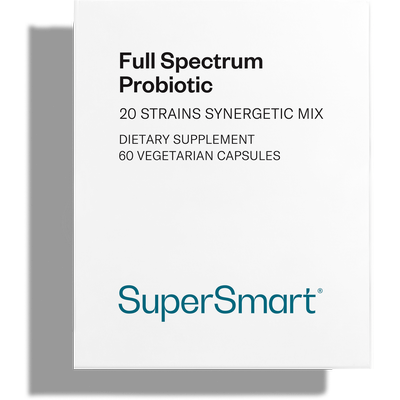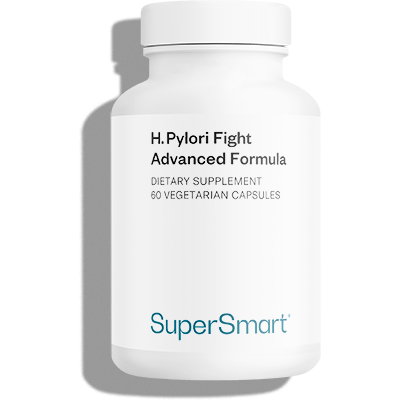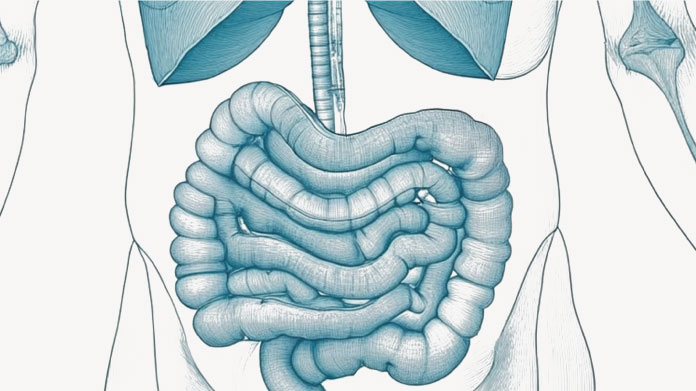Giant banks of faeces to archive our intestinal microorganisms?
Biobanks of human excrement, can you believe it? The idea may sound crazy, but it's not...

Biobanks of faeces: a growing phenomenon
Imagine a huge library with shelves full of... faecal samples. Does that sound far-fetched?
In any case, it doesn't shock microbiologists, who are becoming increasingly dedicated to the large-scale archiving of our excrement in gigantic biobanks.
The proof is in the growing number of projects around the world aimed at collecting our faeces.
Back in 2008, the Human Microbiome Project (HMP), initiated by the US National Institutes of Health, collected biological samples from over 200 volunteers.
Eleven years later, the Million Microbiome of Humans Project (MMHP) is following in its footsteps, with a highly ambitious objective: to collect 1 million human microbial samples, including faecal matter, from various countries and continents, with a view to building the world's largest database.
Similar national-level initiatives have been developed, including American Gut (United States, 2012), Chinese Gut (China, 2017) and, more recently, French Gut (France, 2022).
Collecting human excrement: a way of archiving our intestinal microorganisms
But why is there such a buzz about our excrement?
Because through this initiative, researchers hope to collect, analyse and preserve the billions of intestinal microorganisms that colonise the human tract.
In detail, there are several scientific reasons for this:
- to preserve microbial diversity. The transition to a processed diet and the systematic use of antibiotics have altered the diversity of our microbiota over the centuries (1). The extinction of certain beneficial strains that have not yet been identified as such (or isolated, for that matter) would pose a serious threat to our health. Archiving them at least means that they can be kept in a safe place so that they can be used at a later date, for example to treat certain current or future diseases;
- to study the impact of the microbiota on human health. A better understanding of our microbiota could pave the way for new therapeutic strategies to combat inflammatory or chronic non-communicable diseases such as obesity, type 2 diabetes and asthma (2-4);
- to develop new probiotics and prebiotics. Extensive mapping of human microbiomes would help to identify bacterial strains with positive effects on health, and by extension to design new generations of probiotics (the living microorganisms themselves), prebiotics (which serve as food for them and support their implantation) and postbiotics (the metabolites produced by intestinal bacteria, which are of growing interest to the scientific community);
- to personalise treatments and supplements. More accurate identification and interpretation of variations in the composition of the human microbiome could potentially serve as a springboard for personalised therapies (diet, drugs, food supplements, etc.).
Probiotics and postbiotics: at the forefront of the battle
The range of pro- and postbiotics is expanding every year to target ever more specific problems.
In the field of vision, for example, the inactivated form of Lacticaseibacillus paracasei has been much in the news. Research suggests that it could modulate the inflammatory reactions induced by visual fatigue through stimulation of the eye's immune cells (the Vision PostBiotic supplement is based on the proprietary postbiotic strain Lacticaseibacillus paracasei KW3110, supported by in vitro and in vivo scientific studies) (5).
Another prominent issue in 'biotics' is the fight against the antibiotic-resistant Helicobacter pylori bacterium, responsible for almost 80% of peptic ulcers. Researchers have succeeded in isolating an inactivated strain of Lactobacillus reuteri called DMS 17648, capable of co-aggregating with the pathogen to facilitate its expulsion via the digestive tract (see H. Pylori Fight, or its advanced version H. Pylori Fight Advanced Formula) (6).
The field of slimming is also benefiting from these prodigious advances. Several studies conducted on obese subjects have reported the potential benefits of Lactobacillus gasseri supplementation in reducing weight, waist and hip circumference, and visceral fat mass (7-8). Certain plant bacteria, such as Lactobacillus fermentum strains K7-Lb1, K8-Lb1 and K11-Lb3, have also shown promising effects on regulating body weight in individuals with excess fat around the abdomen (our L. Gasseri & SlimBiotics® synergy combines precisely these 4 probiotics in a single formula) (9).
In the pioneering sector of longevity, it's impossible not to mention urolithin A. This metabolite, synthesised by intestinal bacteria after ingesting foods rich in ellagitannins and ellagic acid, such as red fruits, is thought to help optimise cellular energy production by supporting mitochondrial recycling (mitophagy) (10). It has been the subject of numerous studies into skin ageing, joint degeneration and muscle recovery (made from pomegranate extract, Urolithin A has been tested to guarantee superior purity) (11-13).
Finally, it should be pointed out that to maintain a good overall intestinal balance, it is still particularly beneficial to turn to a multi-strain probiotic that will provide a wide range of 'friendly' bacteria (by combining 20 scientifically recognised strains, Full Spectrum Probiotic adapts remarkably effectively to the inter-individual variability of microbiota) (14).
SUPERSMART ADVICE
References
- Patangia DV, Anthony Ryan C, Dempsey E, Paul Ross R, Stanton C. Impact of antibiotics on the human microbiome and consequences for host health. 2022 Feb;11(1):e1260. doi: 10.1002/mbo3.1260. PMID: 35212478; PMCID: PMC8756738.
- Barcik W, Boutin RCT, Sokolowska M, Finlay BB. The Role of Lung and Gut Microbiota in the Pathology of Asthma. 2020 Feb 18;52(2):241-255. doi: 10.1016/j.immuni.2020.01.007. PMID: 32075727; PMCID: PMC7128389.
- Blottière HM. The gut microbiota and obesity. In: Romieu I, Dossus L, Willett WC, editors. Energy Balance and Obesity. Lyon (FR): International Agency for Research on Cancer; 2017. (IARC Working Group Reports, No. 10.) CHAPTER 11.. Available from: https://www.ncbi.nlm.nih.gov/books/NBK565809/
- Slouha E, Rezazadah A, Farahbod K, Gerts A, Clunes LA, Kollias TF. Type-2 Diabetes Mellitus and the Gut Microbiota: Systematic Review. Cureus. 2023 Nov 30;15(11):e49740. doi: 10.7759/cureus.49740. PMID: 38161953; PMCID: PMC10757596.
- Yamazaki T, Suzuki H, Yamada S, Ohshio K, Sugamata M, Yamada T, Morita Y. Lactobacillus paracasei KW3110 Suppresses Inflammatory Stress-Induced Premature Cellular Senescence of Human Retinal Pigment Epithelium Cells and Reduces Ocular Disorders in Healthy Humans. Int J Mol Sci. 2020 Jul 18;21(14):5091. doi: 10.3390/ijms21145091. PMID: 32708511; PMCID: PMC7403967.
- Mehling H, Busjahn A. Non-viable Lactobacillus reuteri DSMZ 17648 (Pylopass™) as a new approach to Helicobacter pylori control in humans. 2013 Aug 2;5(8):3062-73. doi: 10.3390/nu5083062. PMID: 23917169; PMCID: PMC3775242.
- Jung SP, Lee KM, Kang JH, Yun SI, Park HO, Moon Y, Kim JY. Effect of Lactobacillus gasseri BNR17 on Overweight and Obese Adults: A Randomized, Double-Blind Clinical Trial. Korean J Fam Med. 2013 Mar;34(2):80-9. doi: 10.4082/kjfm.2013.34.2.80. Epub 2013 Mar 20. PMID: 23560206; PMCID: PMC3611107.
- Kim J, Yun JM, Kim MK, Kwon O, Cho B. Lactobacillus gasseri BNR17 Supplementation Reduces the Visceral Fat Accumulation and Waist Circumference in Obese Adults: A Randomized, Double-Blind, Placebo-Controlled Trial. J Med Food. 2018 May;21(5):454-461. doi: 10.1089/jmf.2017.3937. Epub 2018 Apr 24. PMID: 29688793.
- Laue C, Papazova E, Pannenbeckers A, Schrezenmeir J. Effect of a Probiotic and a Synbiotic on Body Fat Mass, Body Weight and Traits of Metabolic Syndrome in Individuals with Abdominal Overweight: A Human, Double-Blind, Randomised, Controlled Clinical Study. 2023 Jul 5;15(13):3039. doi: 10.3390/nu15133039. PMID: 37447365; PMCID: PMC10346309.
- Zhao H, Song G, Zhu H, Qian H, Pan X, Song X, Xie Y, Liu C. Pharmacological Effects of Urolithin A and Its Role in Muscle Health and Performance: Current Knowledge and Prospects. 2023 Oct 19;15(20):4441. doi: 10.3390/nu15204441. PMID: 37892516; PMCID: PMC10609777.
- Kothe B, Klein S, Petrosky SN. Urolithin A as a Potential Agent for Prevention of Age-Related Disease: A Scoping Review. 2023 Jul 27;15(7):e42550. doi: 10.7759/cureus.42550. PMID: 37637627; PMCID: PMC10460156.
- D'Amico D, Lotz M. Potential of Urolithin A to improve joint health. Aging (Albany NY). 2023 Mar 28;15(6):1711-1712. doi: 10.18632/aging.204633. Epub 2023 Mar 28. PMID: 36988500; PMCID: PMC10085614.
- Zhao H, Song G, Zhu H, Qian H, Pan X, Song X, Xie Y, Liu C. Pharmacological Effects of Urolithin A and Its Role in Muscle Health and Performance: Current Knowledge and Prospects. 2023 Oct 19;15(20):4441. doi: 10.3390/nu15204441. PMID: 37892516; PMCID: PMC10609777.
- Kwoji ID, Aiyegoro OA, Okpeku M, Adeleke MA. Multi-Strain Probiotics: Synergy among Isolates Enhances Biological Activities. Biology (Basel). 2021 Apr 13;10(4):322. doi: 10.3390/biology10040322. PMID: 33924344; PMCID: PMC8070017.
Keywords
5 Days
Delivery is prompt and I never saw a…
Delivery is prompt and I never saw a quality problem with the manufacturing. It is not possible to assess efficacy on a personal basis, since too many factors come into play. Efficacy can only be assessed statistically with a sufficient number of cases.
Roger De Backer
6 Days
I collaborates with the Supersmart…
I collaborates with the Supersmart more than 10 years. Every thing is going good. Quality of the things is good. Delivery comes in time. Five stars definitely !!!
Oleksiy
6 Days
All good
Simple, frictionless site, easy ordering, good delivery updates and execution.
Chris Robbins
8 Days
I feel better
I feel better
Peter Ammann
8 Days
Prompt delivery
Prompt delivery
JAKUB Radisch
9 Days
My new go-to for top quality supplements!
I am buying more and more of my supplements from this superb, high quality company. Cannot recommend it enough. Plus, excellent customer service with a quick, helpful team and speedy deliveries. Highly recommend Supersmart!
Cecilie H.
13 Days
SUPERSMART WHAT ELSE👍
SUPERSMART WHAT ELSE👍
DIEDERLE Christophe
16 Days
Excellent quality products with…
Excellent quality products with innovative formulas, as someone who has been suffering with acid reflux, these supplements have been lifesavers.
Oriana Moniz
16 Days
high quality supplement!
high quality supplement!
GALANT
17 Days
Good service prompt delivery
Good service prompt delivery
Mrs Marcella Reeves
21 Days
I like your clear explanation
I like your clear explanation. And how to make a choice of products for a specific health problem
Ingrid
28 Days
Great product and it arrives quickly.
Great product and it arrives quickly.
SOMMARIVA Gianni
29 Days
Excellent products and fast service.
Excellent products and fast service. What do we need more?
Margarida
33 Days
The variety of products is amazing
The variety of products is amazing, the offers are good and the sending is very fast. I just miss having a bit more of guidance about combinations, possible interactions, etc.
Maria Angeles Verdu
35 Days
It was quick
It was quick.
Timo Antero

